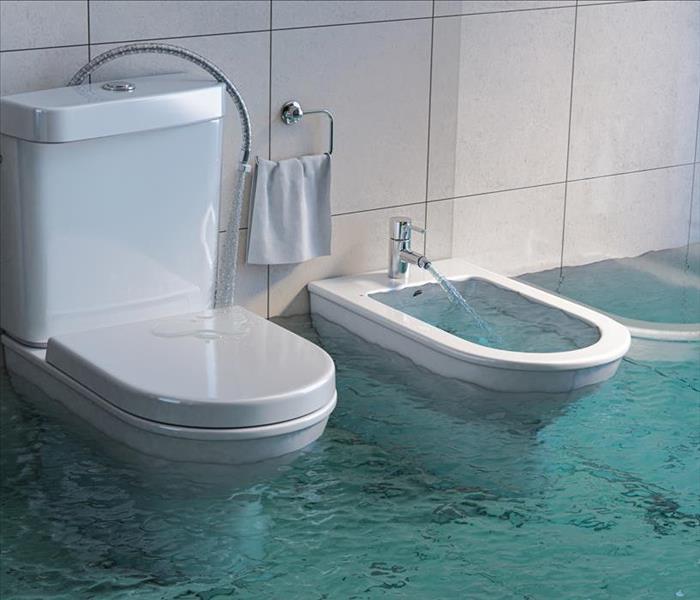Stop a Constantly Flushing Toilet
1/13/2022 (Permalink)
Many commercial facilities use a flushometer to flush toilets. These devices come in manual and automatic models. Because of germs, most current businesses use automatic options. Unfortunately, no matter which models your company has, a toilet overflow is possible, especially when the devices begin to malfunction, leading to a constant flow of water and continual or repetitive flushing.
While you can call a restoration service in Bath, NC, for assistance, a flushometer is designed for easy access and correction. However, there are several occasions when it is best to contact a professional for help, including:
- Persistent problem
- Reoccurrence of the situation after resolution
- No resolution after troubleshooting
Stop a Toilet and Prevent Toilet Overflow
Repetitive flushing is problematic for several reasons, including water usage and the potential for a toilet flood. The last thing any business needs is interruption resulting from overflows or backups.
Thankfully, a solution to your toilet flushing problem can be as simple as replacing a washer or flange. However, it can also be complicated, requiring professional assistance and a more thorough inspection of the company's plumbing system.
The only way to know the severity of your problem is to call a specialist or attempt one of two DIY corrections. As flushometers come in both manual and automatic designs, you have two possible quick fixes.
Manual Flushometer
The first step to fixing your manual flushometer is to shut off the water. You do this by finding the slot nearest the handle. The screwdriver slot might be under a cover, so you may need to remove that first. Once exposed, use a screwdriver and turn the valve to shut off the water supply.
Then, you will need to remove the top lid and the flange cover. The top cap will require a wrench to remove. Once removed, the flange cover is exposed, and you can remove that by hand.
With the cover removed, you will expose the gasket. Remove the gasket and clean it, including the weeping hole.
Finally, put everything back as it was and test the toilet. If the toilet still doesn't work, contact a plumber.
Automatic Flushometer
You will start the process for the automatic flushometer the same as you did with the manual version: turn off the water supply. With the water off, press and hold the chrome button. If you hear two clicks that are two seconds apart, you likely need to replace the diaphragm kit.
The problem might also stem from a solenoid issue. If the solenoid has been serviced in the past, check it for any missing parts. See if it is double-stacked or missing bowl rings.
Once everything is corrected, replaced, or checked, put everything back together. Turn on the water supply and test the toilet. If the problem persists, contact a plumber.
While a constantly flushing toilet does not mean your company will experience a toilet overflow, it does increase the odds. It is crucial you figure out what the issue is. If you are not sure or are not comfortable with any of the DIY methods discussed above, contact a local professional.
The longer you wait for repairs, the greater your chances of a disaster and the more money you cost your business.






 24/7 Emergency Service
24/7 Emergency Service
